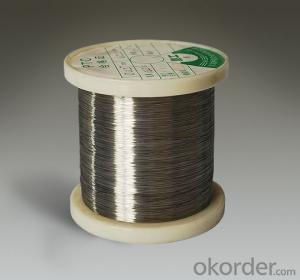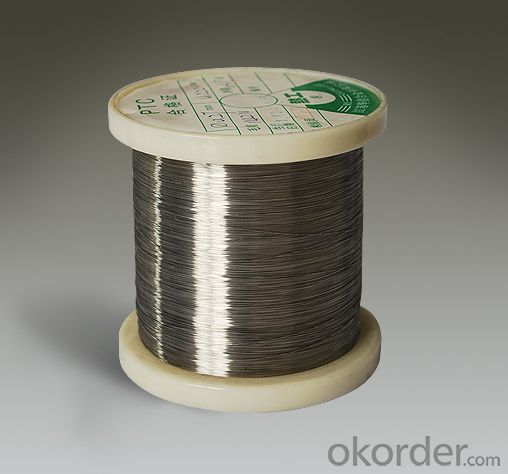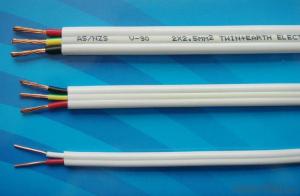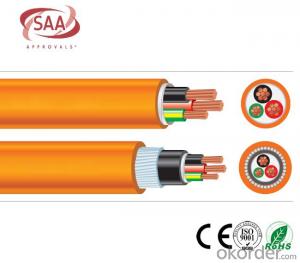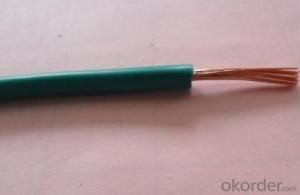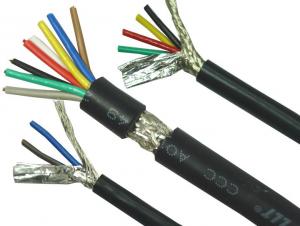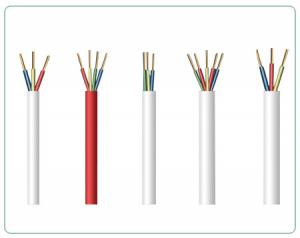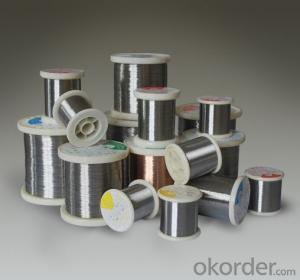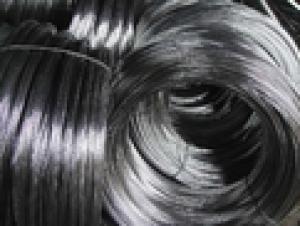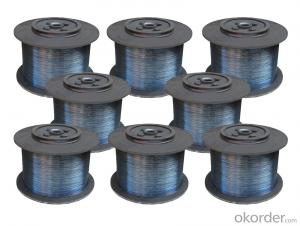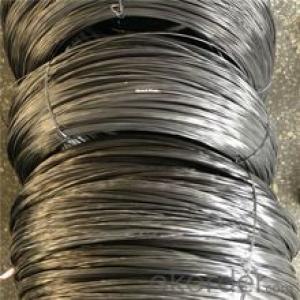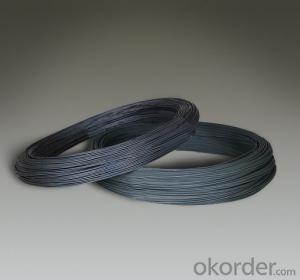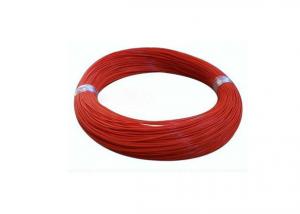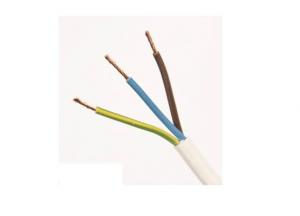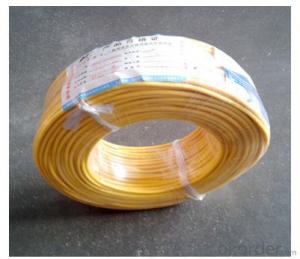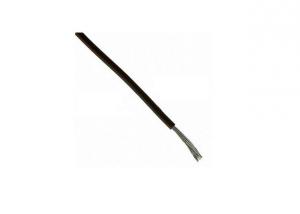PTC thermistor alloy wires a quality high strength
- Loading Port:
- Shanghai
- Payment Terms:
- TT OR LC
- Min Order Qty:
- 10000 m
- Supply Capability:
- 1000000 m/month
OKorder Service Pledge
OKorder Financial Service
You Might Also Like
PTC thermistor alloy wires for Temperature Sensitive Resistance
PTC Alloy wire has medium resistivity and high positive temperature coefficient of resistance. It is widely used in various heaters. It can automatically control temperature and adjust power by keeping constant current and limiting current.
Temp. Coeff. Of Resistance: TCR:0-100℃ ≥(3000-5000)X10-6/℃ |
Resistivity: 0-100℃ 0.20-0.38μΩ.m |
Chemical composition
Name | Code | Main Composition (%) | Standard | ||||
Fe | S | Ni | C | P | |||
Temperature Sensitive Resistance alloy wire | PTC | Bal. | <0.01 | 77~82 | <0.05 | <0.01 | Q/320412 HXK 001-2008 |
Note: we also offer special alloy for special needs under the contract
Properties
Name | Type | (0-100℃) (μΩ.m) | (0-100℃) (αX10-6/℃) | (%) | (N/mm2) Tensile Strength | Standard | |||
Temperature Sensitive Resistance alloy wire | PTC | 0.20-0.38 | ≥3000-5000 | ≥390 | GB/T6145-2010 | ||||
- Q: A guy at Home Depot scared the beejeezus out of me today when showing me those little strain relief screws you are supposed to use at the service panel if you drop a new electric wire in. He said electrical wires can vibrate against the sharp metal, wear through the wire casing, and pose a fire hazard over time if you don't use the reliefs. I have only wired two new circuits into my house panel in the past few years, but I didn't pay close attention to it. I'm going to check it again as I'm doing some new wiring but is this true? I always thought wires inside the walls or panel were still and secure with or without the strain relief?
- Yes electricity will vibrate, and over time it may rub something, but unless its totally loose, I dont think you have anything to worry about. Ive wired many many houses and havent had anyone tell me that they have had that happen.
- Q: I have an old craftsman Powr Panl (yes spelled that way) and it has an extension cord on it that has 10 individual wires on the inside. There are 5 dull white ones, and then five that are: bright white, red, black, green, and brown. Any ideas? This is the original cord, and was hooked up in 1950 at one point. Any ideas?
- Standard colors for power cords these days are white (for neutral/return), black (for 'hot' - think bad guys in black hats, it's the wire that will zap you if holding onto the kitchen faucet when live and you touch it), and green (for ground). Note that the white wire is the return path that carries current while the green is usually connected to the case or chassis and should trip the circuit breaker if it begins to carry current. A guess? The name Powr Panl suggests that this is a power distribution panel with multiple outlets. It's possible the color coding was used to help track connections to ganged panels. Just a guess though. With perhaps more detail, a better informed guess could be made. What does the panel look like? How large are the wires? To what do they connect? Feel free to email for follow-up.
- Q: Hi, I'm finishing part of my basement and will be running new wires and adding electrical outlets. I've some question about the electrical wiring code: I frame the wall with 2x4 with a few inches distance off the concrete wall. 1. When running wire from wall to ceiling joint, can I run the wire around the inner side of the top plate(between studs and concrete wall) instead of drilling hole on the top plate and running through the hole? I will staple the rest of the wire along the stud and joint too, 11/4 inch away to the rim.2. When drilling the hole in the stud for wiring, can I drill the hole closer to the concrete wall but the hole is less than 11/4 to the inner side of the stud? Is this against the code? I know I cann't nail from the inner side after framing:)3. It the 6 feet rule aplly also to basemnent as a recreation room, for all walls?4. Is wall switch-controlled lighting outlet means I have to install switch controlled receptacle or switch controlled light is enough? Thanks for your help!
- The code is about protecting the wire from damage. Yes you may use the gap nothing in the code forbids this. Unless you have an anal inspector it will be fine. Yes you can drill the hole as close to the concrete as you want and you don't need a screw plate to protect it. This rule is to protect the wire from dry wallers and their nails and screws. Again if the inspector gigs this he is a moron and anal. The 6' rule applies to any usable wall space in a finished basement. 6 feet from any break in the wall and every 12 feet to the next receptacle. Each receptacle covers the wall space 6 foot to each side. Outlet is a term used for any opening that supplies power, that includes lighting boxes (the ones that your light hangs from). In other words your ceiling light is an outlet. A receptacle is the term used for what you plug into. A switched lighting outlet can be a porcelain with a pull chain if you want. Doesn't mean it has to have a switch on the wall. Common misconception. The language of the NEC can be tricky.
- Q: I had the electrical wiring installed in my living room for two sconces. I found the most perfect lights that I want to install. Problem is they have a lamp cord and a plug that needs an electrical socket. I was wondering if I cut the cord and wire it to the sconce black/white would that make them work off of the switch?
- yes, but make sure you also connect ground (green) wire
- Q: I have two power acoustic 12sthey are 1600 to 1800 wattsI have a 1 ohm stable 3000 watt monoblock amp pushing them.It really bogs my lights down.what's the benefits of using a extra battery vs a capacitor.I have a spare battery I could use and also a capacitorand whichever is more beneficial can you explain how to wire it. What kinds of performance gain will I get out of both as far as base wise.
- The capacitor would be a better way to go. Another battery would make you have to upgrade your alternator also. So go with the capacitor. Run a 0 gauge wire from your battery to a distribution block 0 gauge in 2 4 gauges out one to the amp and one to the capacitor then ground the capacitor. It will store the unused power and help your battery out. Hope this helps.
- Q: I need to know a SAFE SIMPLE way to run the electrical wiring for an HHO system into my 1985 Chevy Scottsdale. I don't want to incorporate manual on/off switches in the dash. I just want it to turn on when the truck is running, and off when the truck is not in operation. The unit has 4 hex bolts that need to be connected to power source, presumably 2 + 2-I think. I've heard of incorporating the alternator into the wiring. I've heard of splicing power into a unit that only is operable when vehicle is on, such as radio or windshield wiper motor. I've heard of using relays, and some sort of automatic switch that turns on when power is supplied to it, and off when the power ceases to come into it. I've heard things about PWM's and more.I just don't know what I'd need, what some of those things do, or how to hook them up. ANYONE WITH ELECTRICAL KNOWLEDGE /OR HHO INSTALATION KNOWLEDGE.PLEASE HELP. Thank you!
- Run the ground (black) to the negative battery terminal. Run the hot (red) to a toggle switch on your dash and then another hot line from that switch to the positive terminal on your battery. You will want to have an inline fuse on your hot wire from the Generator to the toggle switch. Depending on your generator setup - anywhere from a 10 - 30 amp fuse.
- Q: I have two switches (one controls a fan and one controls a light) in a box with only one feed wire. The normal pigtail split is used for the blacks to the switches and the whites to the light and fan, ground to grounds. I have a timer with a black, red, white and ground that I will use to control the fan. Ground goes to ground, red goes to the fan, black gets connected to the existing blacks, for the white I pigtailed two short white wires with the white feed wire and connected one to the light switch white, and the other to the whites for the the fan and timer white (it works). Now the question Could I have connected the timer white with the whites for feed, the light and the fan or would that have caused a problem, (I thought it would so that is why I split the feed white off with the pigtail)
- It's only a question of what fits in the wire nut. When you buy wire nuts they come with a list of all of the different combinations of wires that will fit in them. Your way is fine - a bit of extra work is all.
- Q: For example, i saw a simple electric generator constructed with magnets and fine wire which was spooled to react against the magnets. Is there an advantage to having a spool of fine wire rather than a solid block of copper?
- The copper you saw actually has an insulator sprayed onto the outside, so it doesn't touch the other winds in the coil. So yes, the reason is that the inductance increases the more turns you have of a coil, or in the case of a motor, the electromagnetic force increases with more turns.
- Q: I need an electrician to install pot lights and make some electrical wiring in my basement and I want to know the price before I make an order. Are there any electrical services company in Oakville district which can give at least an approximate price of work right away?
- Here is the site of electrical services company in Oakville electrical-services.ca/quote.php There you can make an online quote and they will send the price of work to your e-mail.
- Q: I rent a home and the power started having really bad surges last night. I called my power company and he says their end is fine. The electrician inside says there is an issue with the wiring of some sort. Is the landlord responsible for thing that got fried like my cable box and my computer?
- No, the landlord does not have to pay you for an electrical problem (at least not in my state) you should number one buy a good surge protector and number two get your landlord to get an electrician out there and find the problem. Then I suggest you get renters insurance. The electrician says there is a problem did he check it out and see what the problem was, if so why did he not repair it? Many homes have a dropped neutral problem that could be in the meter base. at the main panel or even in the line side on the utility side. This would effect the whole house and if it is a single circuit then it could be many things but more then likely the same thing on a branch circuit. If it is a dropped neutral problem you will experience lights flickering and some things looking like they are going crazy. This is caused by the two hot wires that comes in loosing the neutral to carry back a load properly, one side may go as high as say 160 volts and th other side to drop to 80 volts or worse yet if you lose the neutral you are in big trouble. I would get it repaired before I plug anything in to your electrical outlets especially electronics.
Send your message to us
PTC thermistor alloy wires a quality high strength
- Loading Port:
- Shanghai
- Payment Terms:
- TT OR LC
- Min Order Qty:
- 10000 m
- Supply Capability:
- 1000000 m/month
OKorder Service Pledge
OKorder Financial Service
Similar products
Hot products
Hot Searches
